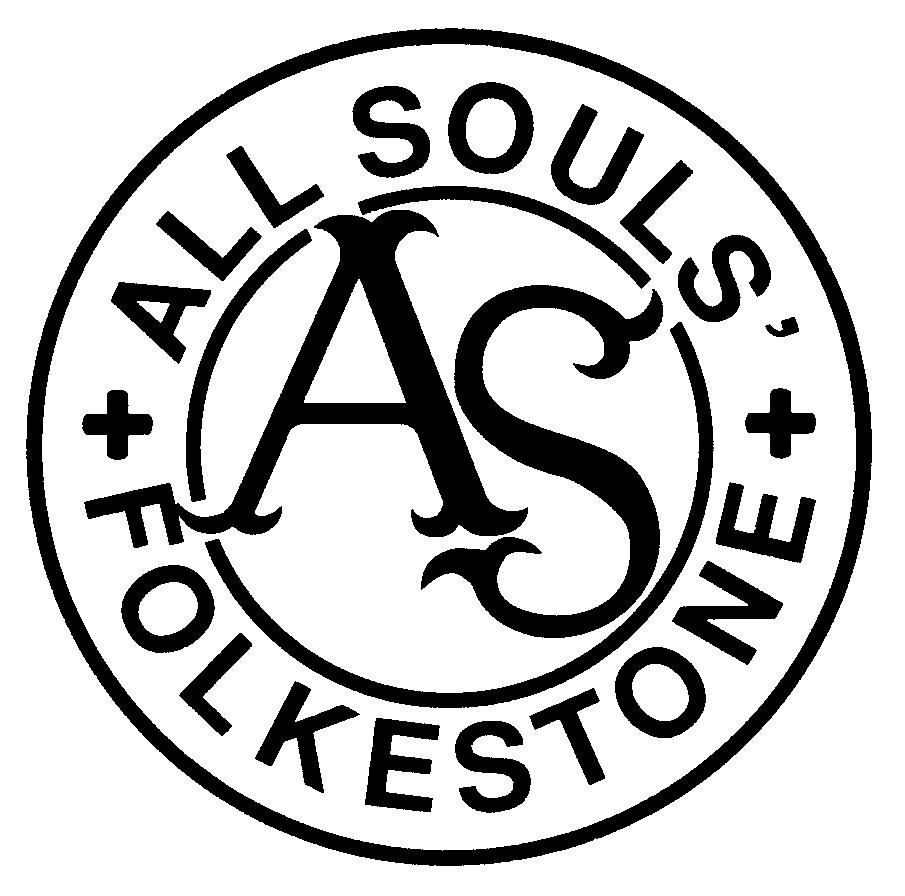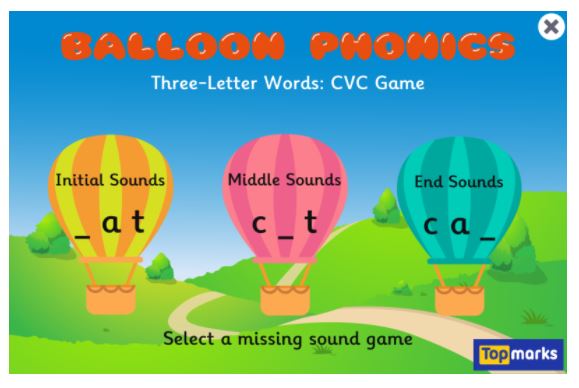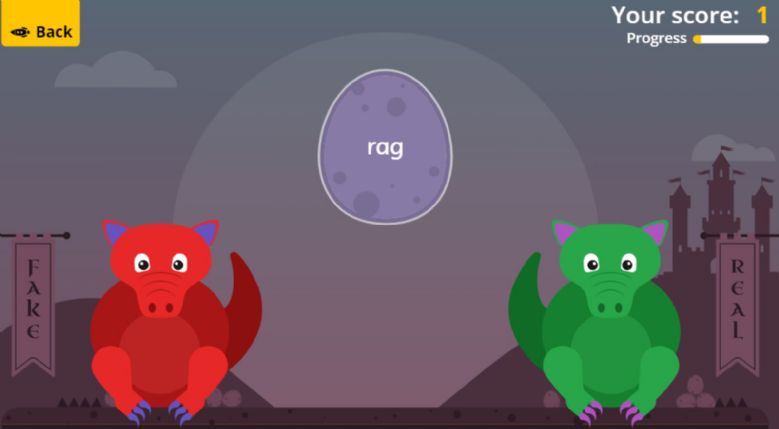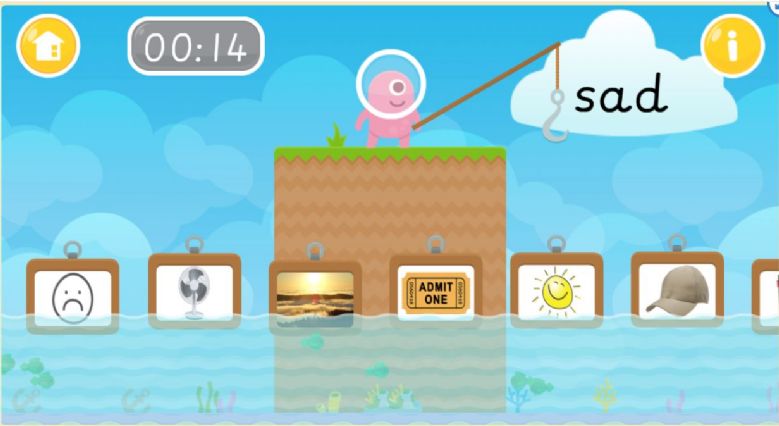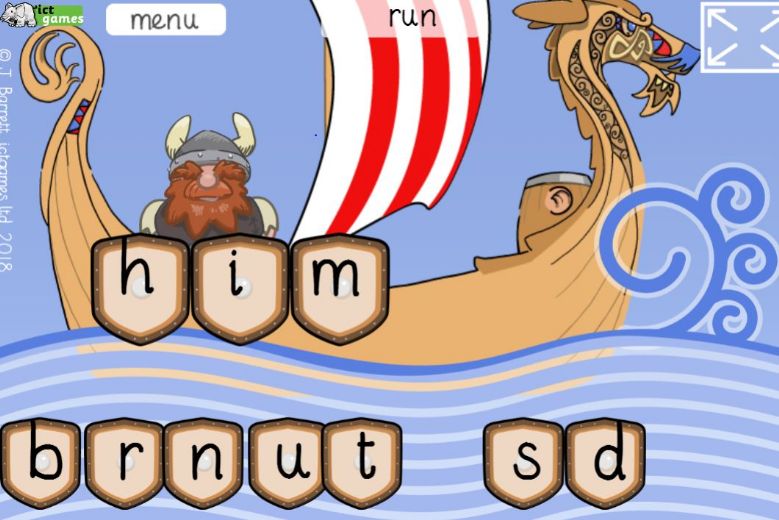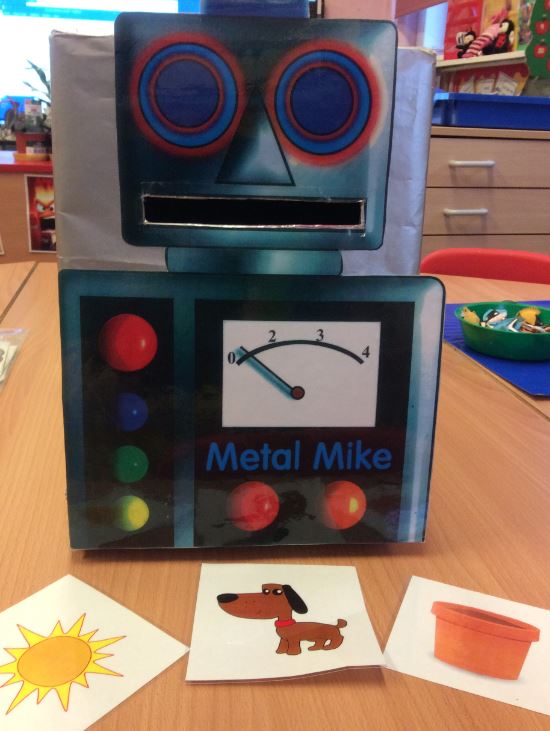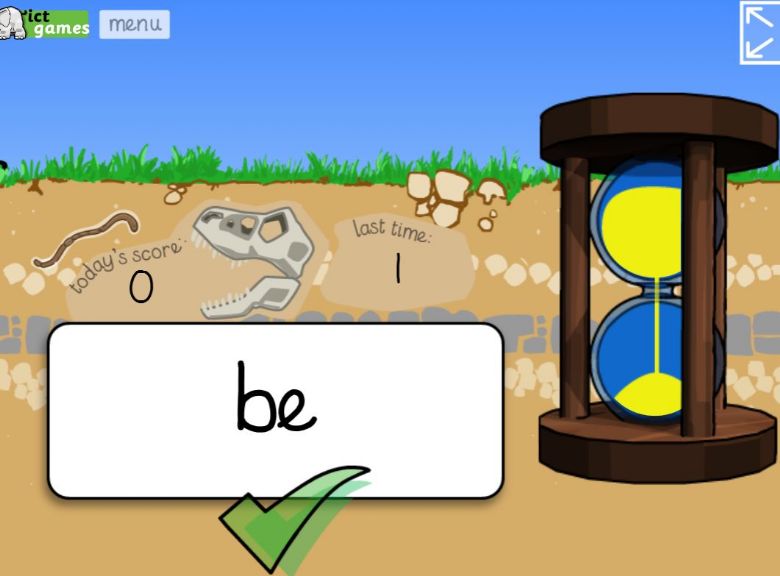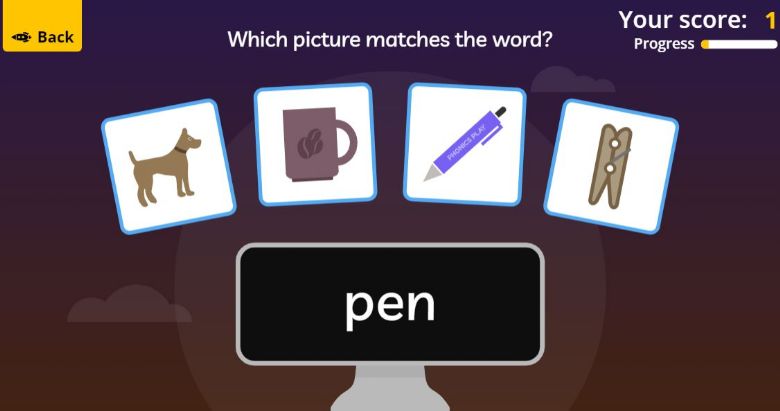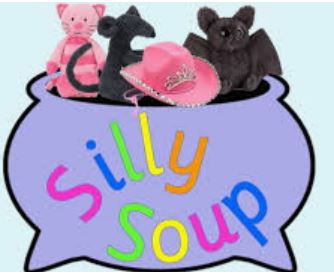Reading and Phonic Games
Games that promote sentence reading:
Tell a T-Rex from ict-games.com
Click the picture to have a go! When on the site, select 'CVC' words
Hearing the 'beginning', 'middle' and 'end' sounds in words
Try 'The Balloon Game' from Top-Marks. Click on the picture below to play.
Look at the picture and listen carefully to the word that is spoken. Can you hear the last sound in the word? Click on the letter that matches the last sound you hear. What will your highest score be?
CVC reading games
(short words made from a 'consonant', a 'vowel' then a 'consonant')
Try Dragon's Den from Phonics Play.
Click on the picture below to be taken to the site.
When you are on the site select 'Phase 2' and then click on the sounds you want to practise. Check your child's reading log book to see which sounds we have covered so far.
When a word is displayed encourage your child to sound out each letter for themselves and blend the sounds together to read the word. You may need to support them to blend by saying the sounds close together. When they can read the word decide if the word is a real word or a made-up one. If the word is real give the egg to the green dragon, if not give it to the red dragon. What will your score be?
Try these too...
Fishy Phonics from Phonics Bloom. Click on the picture to go there...
Full Circle from ict-games.com
Click below to play. When on the site, select the letters from Phase 2 that your child is confident with.
Metal Mike
Metal Mike is a friendly robot that can help when learning our phonics.
Here he is...
You can make your own Metal Mike by covering a box (such as a shoe box) with tin foil. Cut a slot (so that you can post cards into Metal Mike) then decorate with buttons, dials, a friendly face and whatever else you wish!
Try these games to play with Metal Mike using the picture cards you will find as an attachment at the bottom of this page.
1. Use the cards to focus on initial sounds. For example, encourage your child to find a picture beginning with the sound 'p, p, p'. They can post the matching card into the slot.
2. Use the cards to play a blending game. Grown-ups: say the sounds heard within one of the picture card words e.g. "p", "o", "t". Encourage your child to listen carefully and blend the sounds together to hear the word "pot". (you may need to say the sounds very close together to support them in this initially). Again, post the matching card into the slot.
3. Alternatively, instead of focusing on the initial sound, you could encourage your child to find a card to match a given 'middle' or 'end' sound.
4. Metal Mike can also help with tricky words. Write out the tricky words you are learning onto cards. Every word your child can read successfully can be posted into Metal Mike. How quickly can he gobble up all the words?
Games to help your child to learn their Tricky Words
As mentioned in our 'Reading and Phonics' introduction, there are many fantastic ideas to be found on the web to encourage your child to learn their tricky words.
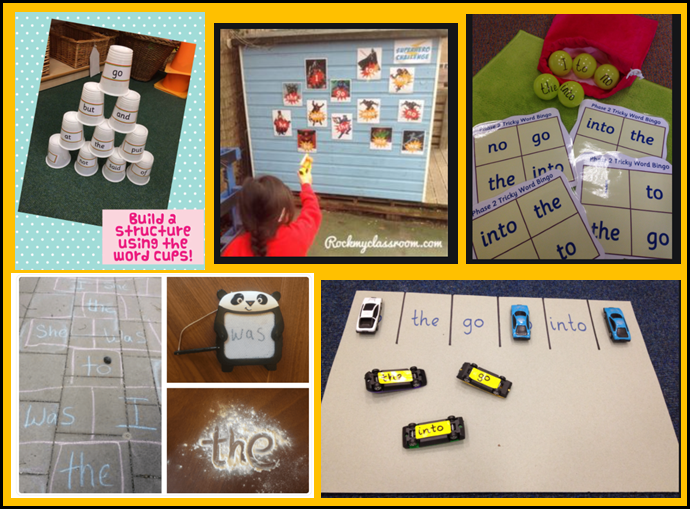
We enjoy playing 'Help a Hedgehog' from ictgames too.
Click on the picture below to go to the site.
When on the site select 'I'll enter my own word thanks'.
Type in each tricky word, selecting 'save word' after each one.
Tricky words to type in for Phase 2: I, go, no, to, into, a, the, and, look, like
When all words have been entered, select 'done' and you are ready to play!
Games to promote the oral 'blending' of sounds
i.e. hearing a series of spoken sounds then blending them together to hear a spoken word. In these games no letter cards or written letter shapes are used, they are simply listening activities.
Simon Says
In this game the adult takes the role of 'Simon' and gives instructions to the child. The final word of the instruction is not said but sounded out for example.
"Simon says... touch your "l" "e" "g"
or "Simon says... can you "h" "o" "p"
Say the sounds really clearly. Look to see if your child can put those sounds together to hear the word. If they find it tricky try saying the sounds closer together to help them with the blending part. When they get the hang of blending you can make the sounds more separate as you say them to encourage your child to do the blending independently.
NOTE: This is not a spelling activity. You need to say the sounds as they are heard in the word, not as they are spelt. For example if you are giving the instruction
"Simon says... tap your head". You would say the sounds "h" "e" "d" as these are the sounds that are heard in the word.
Cross the river
In this game you need to create a bridge that can take you safely over a crocodile infested river!
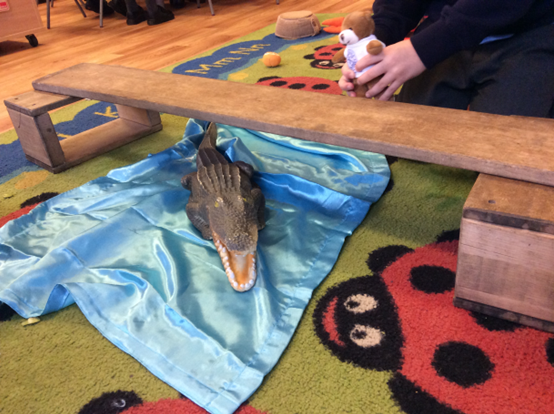
To cross the river safely, without ending up in the jaws of the crocodile, your child must blend together the sounds spoken to them.
Start with what we call CVC words (a consonant, a vowel and a consonant) such as cat, dog, hat, bug, map.
As in Simon says say each sound in the word clearly but separately... "h" "o" "t"
If it's tricky for your child say the sounds closer together to help with the blending. Each time they are successful they can cross the river safely.
Pick a Picture
from phonicsplay.co.uk
Click on the picture above to go to the site. Select 'Phase 2'.
Initially, adult support will be needed to sound out the letters of the word shown; 'p' 'e' 'n'. Encourage your child to listen carefully and blend the letters to hear the word, 'pen'. If they find this tricky, try saying the sounds much closer together so that you are helping with the blending. Once they hear the word they can select the picture that matches. Over time, as your child becomes confident in recognising each letter sound they can take ownership of sounding out the letters and read each word independently.
Games to promote hearing the initial sounds of words
Silly Soup
For this game you need a cooking pot and spoon and a variety of objects placed around the pot. Wear a chef hat if you have one!
Stir the empty pot with the spoon and say the rhyme.....
"I'm making lots of silly soup.
I'm making soup that's silly.
I'm going to cook it in the fridge,
until it's nice and chilly."
Into the pot goes something beginning with ......(say a sound e.g. 'p' - make sure it's the pure sound) then invite your child to find an object beginning with that sound to add to the pot.
Stir again, say the rhyme and repeat the activity with a new sound.
I Spy
An old favourite.
"I spy with my little eye something beginning with ....."
Look for things around the room that begin with the sound chosen.
